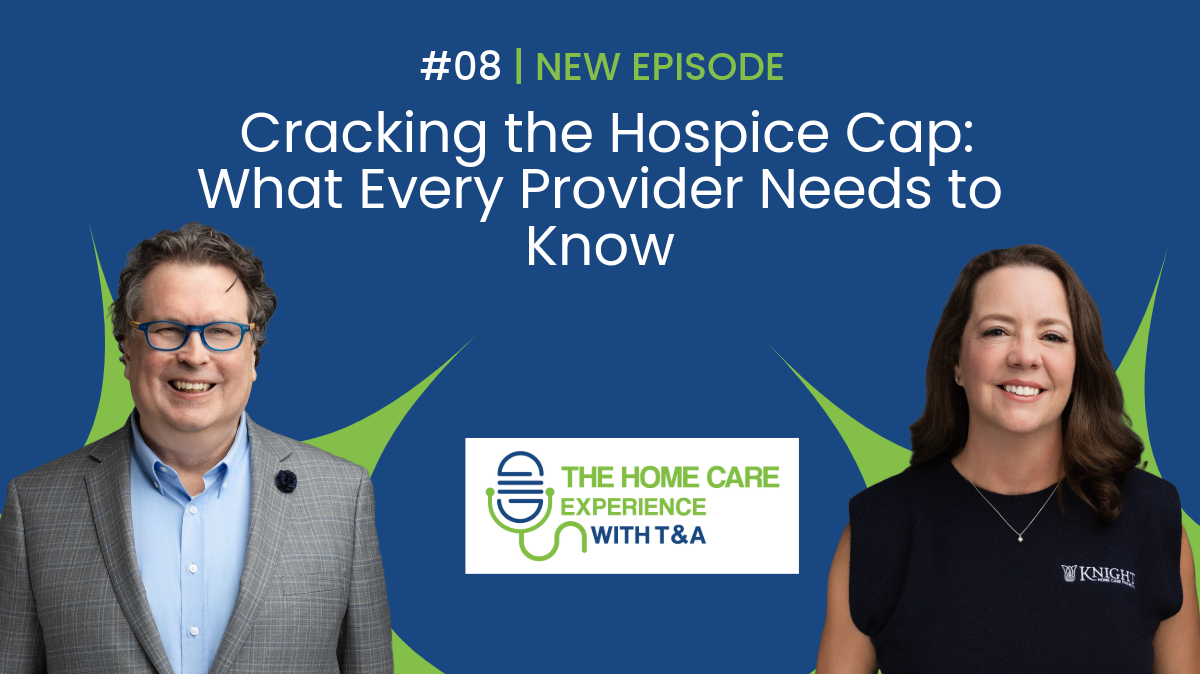Understanding the Hospice Cap: The Silent Killer of New and Growing Agencies
If you operate a hospice or plan to buy or launch one, you need to understand the hospice cap.
This lesser-known Medicare policy has upended many agencies, blindsiding them with multi-million-dollar overpayment demands. In Episode 8 of The Home Care Experience with T&A, Amy Taylor and Troy Brooks offer a plain-English breakdown of what the cap is, why it matters, and what you can do to avoid disaster.
What Is the Hospice Cap?
Medicare wants to prevent hospices from collecting large sums for long-stay patients who may no longer qualify for palliative care. But instead of limiting payments per patient, they apply a cap in aggregate—averaged across all your Medicare patients.
That means if one patient stays a year and another only a week, the cost must still balance out under the aggregate cap amount, currently around $34,000 per beneficiary per year. If your total reimbursements exceed that cap, you’re on the hook.
The Trap for New or Acquired Agencies
Many new agencies grow their census quickly by accepting long-stay patients or transfers. But each of those long-stay patients “drains the bucket” of cap credits faster than they fill it. In fact, a single patient staying too long can cost your agency thousands—unless offset by short-stay admissions.
Troy explains how this math often blindsides operators in their second or third year of business: “If you’re cash-flow rich but haven’t done your cap check—you may be in for a big surprise.”
Transfer Patients: A Hidden Risk
Another key point discussed in the episode is how cap credit is prorated when patients transfer from one hospice to another. If a patient used half their credit at a prior agency, your allowable reimbursement is automatically reduced.
Amy calls this “the silent killer” of financial planning in hospice, particularly for agencies trying to scale fast.
Documentation & Monitoring
The key to avoiding cap issues is proactive monitoring. That includes:
- Tracking your average length of stay
- Watching the ratio of long- vs. short-term patients
- Being cautious with patient transfers
- Pulling accurate reports (not relying solely on EMRs)
- Partnering with cap monitoring firms when needed
It’s Not Just a Financial Issue—It’s a Compliance One
Beyond finances, the episode also explores how medical necessity and proper documentation play into both cap management and audit risk. Amy and Troy remind listeners that “long stay” doesn’t always mean “non-compliant”—but it does mean “extra scrutiny.”
Why It Matters
Hospice is a beautiful and essential benefit. But as Amy puts it, “Even providers with the best intentions can go under if they don’t understand how the money flows.”
This episode is a must-listen for:
- New hospice operators
- Buyers/acquirers of existing agencies
- Compliance officers and administrators
- Financial advisors working with healthcare clients
Listen now on Apple Podcasts, Spotify, or at thehomecareexperience.com




